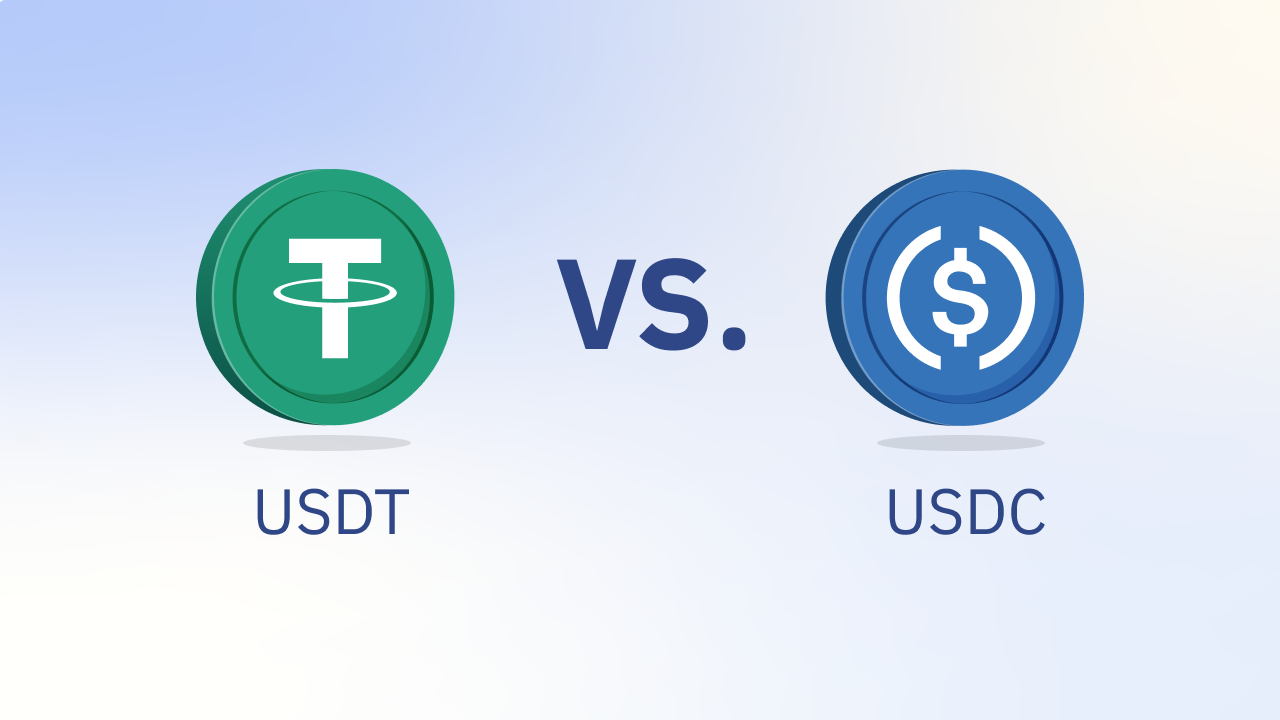In today’s rapidly evolving cryptocurrency landscape, stablecoins are crucial for maintaining stability amidst market volatility. Among the most prominent stablecoins are USD Coin (USDC) and Tether (USDT). Both have garnered significant attention due to their peg to the US dollar and broad adoption. This guide explores the USDC vs. USDT debate, providing insights into each coin to help you determine which might best suit your needs in 2024.
Overview of Stablecoins
Introduction to Stablecoins
Stablecoins are digital assets designed to minimize price fluctuations by pegging their value to a reserve asset, such as the US dollar. This peg ensures stability, making stablecoins a reliable medium of exchange and store of value within the cryptocurrency ecosystem.
Importance of Stablecoins in the Cryptocurrency Market
Stablecoins like USDC and USDT play a critical role in facilitating smooth trading, cross-border payments, and decentralized finance (DeFi) applications. Their stability and regulatory compliance make them attractive to investors and traders seeking to mitigate the risks associated with more volatile digital assets.
Explanation of USDC and USDT
USD Coin (USDC)
- Issuer: Centre Consortium, a partnership between Circle and Coinbase.
- Backing: USDC is fully backed by US dollars or equivalent assets held in reserve, providing a high level of transparency and regulatory compliance.
- Blockchain Support: Available on Ethereum (ERC-20), Solana, Algorand, and others.
- Advantages: USDC’s transparency and regular audits offer users a sense of security and trustworthiness.
Tether (USDT)
- Issuer: Tether Ltd.
- Backing: USDT claims to be backed by a mix of fiat currencies, loans, and other assets. However, its reserve backing has faced scrutiny and controversy.
- Blockchain Support: Supported on multiple blockchains, including Ethereum (ERC-20), Tron (TRC-20), Omni Layer, and others.
- Advantages: USDT’s widespread adoption and high liquidity make it a convenient choice for trading and various DeFi applications.
Use Cases of USDC and USDT
Common Uses of USDC
USDC is widely used for peer-to-peer transfers, cryptocurrency trading, and as a stable asset for DeFi protocols. Its transparent backing and regulatory adherence make it ideal for cross-border payments, remittances, lending, and tokenized asset trading.
Common Uses of USDT
USDT is commonly utilized on cryptocurrency exchanges, as collateral for margin trading, and in decentralized applications such as decentralized exchanges (DEXs) and yield farming protocols. Despite its regulatory challenges, USDT’s high liquidity and broad acceptance continue to drive its use in various financial activities.
Advantages and Disadvantages of Using USDC or USDT
USDC
- Advantages: Offers transparent reserve backing and regulatory compliance, enhancing user confidence.
- Disadvantages: May have less liquidity compared to USDT and is still growing in adoption across different platforms.
USDT
- Advantages: High liquidity and widespread use across exchanges make it a convenient choice.
- Disadvantages: Controversies over its reserve backing and regulatory issues pose risks.
Future Outlook for USDC and USDT
Potential Developments in 2024 for USDC
In the coming year, USDC is likely to enhance its transparency measures, expand partnerships with traditional financial institutions, and integrate further into DeFi platforms. These developments, along with potential collaborations with other stablecoin projects, will shape USDC’s trajectory in 2024.
Potential Developments in 2024 for USDT
USDT may focus on improving its audit practices and transparency to rebuild trust. Increased regulatory compliance and better reserve backing, along with innovative use cases, could strengthen USDT’s market position and solidify its role in the digital assets space.
Predictions for the Growth of Stablecoins in 2024
As stablecoins like USDC and USDT gain prominence, 2024 is expected to see increased adoption of stablecoin payment solutions, further integration into mainstream financial services, and growing market capitalization. Regulatory advancements and technological innovations are likely to drive the expansion and acceptance of stablecoins across various sectors.


